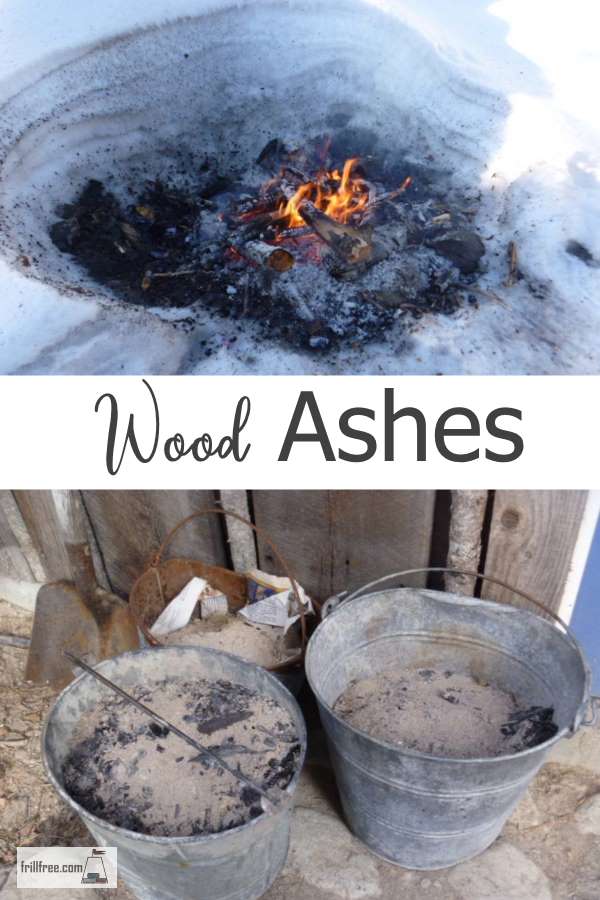- Homesteading
- Natural Fertilizer
- Wood Ashes
Wood Ashes
Soil Sweetener from ancient times
Wood ashes are a soil sweetener commonly used as an amendment to bring acid soil more towards neutral.
In a similar fashion to Dolomite lime it’s used for changing the pH of lawns and gardens especially under coniferous trees.
For centuries, wood ashes have been used in organic gardens - long
before Dolomite lime was widely available. Wood ashes are caustic, but
they're alkaline, not acid.
Ashes are about two thirds as effective as horticultural lime or dolomite lime in raising a low or acid ph.
Avoid using wood ashes at all if you are in a high pH area with alkaline soil above 7.
Confused about what pH is and how to test it?
Go to this site to learn how to do your own soil test.
Wood ashes will also contain calcium, phosphorus, magnesium and sulfur in variable amounts, depending on the type of wood burned as well as being a natural source of potassium.
If a tree while it’s alive has roots reaching to the depth of a water table at one or two meters below the ground, its wood will have all the nutrients carried up from that depth in its tissues, including the fall leaves.
Once the wood burns, it will still retain some of the nutrients in the ash.
Adding wood ashes to the compost in small amounts or sprinkling it onto your garden beds as a snow melting method can add the small amount of these nutrients to the garden.
Ashes from your fireplace often have unburned parts of whatever wood you’ve burned to heat your home, which are a carbon sequestering material.
Biochar is frequently referred to as a carbon sink, and holds onto the carbon dioxide that otherwise would be released into the atmosphere.
The charcoal in the wood ashes serves the same purpose.
Use an amount of about .5 kg (one pound - about a coffee can full) of ashes to each 1 square meter (square yard) of soil, and avoid using wood ashes to adjust the pH more than once every three years, as it has the potential of causing an excess potassium level.
This can cause an imbalance of other nutrients.
For slug control, sprinkle the ashes around the base of any susceptible plants, as slugs and snails won’t cross any sharp material.
Are Ashes Good For Compost?
You can change the pH level of your compost heap by using fireplace ashes in between the brown layer and any layers of green material, and use the resulting compost which contains trace elements on your vegetable garden.
Avoid using the compost on acid-loving plants because the soil pH will be too high for them (meaning too alkaline). Most other garden plants appreciate the buffering effect of the wood ashes which helps them absorb nitrogen fertilizer and necessary minerals that would otherwise be unavailable to them even if there is enough in the soil.
You can use the ash from a wood stove or a fire pit, but only if you've burned wood, not charcoal briquettes, or anything with oil stains or painted wood which could contain chemical residue.
Wood pellets produce a very small volume of wood ash, but if you clean out the ashes on a regular basis, this is a good way to gradually change the soil's pH if you're adding them in small amounts to the compost.
Let the ashes cool first, before adding them to the compost bin - hot coals won't benefit the compost, as well as being a safety hazard.
Put a thin layer of the finished compost on garden soil - especially acid soils, but most soil types will benefit. This will change the pH of the soil and buffer it so it will be more suited to a wide variety of crops.
Avoid large amounts of too much ash, especially on young seedlings as residue in the form of salts can result. Larger amounts at the end of the season, or smaller amounts throughout the growing season will give you the best results.
The composting process will gradually change the pH over time, which is the best way to alter soil acidity. Grass clippings, for example, are famous for being too acidic, and large quantities of them in the compost pile will smother the micro herd, without the help of the wood ash compost.
How to Store Wood Ashes
Only use metal containers to store wood ashes in, as plastic will quickly become brittle and deteriorate in contact with the alkalinity.
Make sure the ashes and coals are completely cold before putting them inside any building, or even beside a building – it’s astonishing how long it takes for smoldering ashes to completely cool.
Use caution when handling wood ashes as they are caustic and harmful to eyes and skin - sprinkle only on windless days to avoid the dust blowing.















